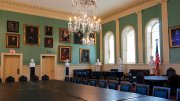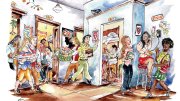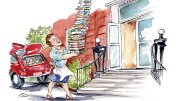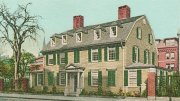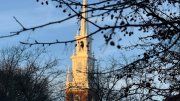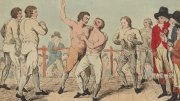The Faculty Room, the soaring second-floor space at the center of University Hall—designed by Charles Bulfinch, A.B. 1781 (who provided his services in exchange for tuition payments for son Thomas, class of 1814—an early legacy!) and completed in 1815—is justly beloved as one of Harvard’s great built environments. Originally a chapel, then classrooms, then a chapel again, the space, demonstrably shorn of its religious aura, now accommodates Faculty of Arts and Sciences meetings. Members convening there enjoy grand views through the high, multipaned windows into Tercentenary Theatre’s tree canopy, lovely in all seasons.
The interior view of 35 portraits hung high on the walls and 15 busts along the perimeter, all on the theme of historic Harvard heavies, has come to seem more problematic. The 2021 report of FAS’s Task Force on Visual Culture and Signage—citing critiques of institutional “willingness” to “persist in celebrating historical figures who defended prejudice,” and advocacy for displaying Harvard’s traditions and aspirations in ways “meaningful and legible to the community” of today—called for a “more dynamic, welcoming, and inclusive approach” (see harvardmag.com/task-force-visual-culture-21). Among the three “high-impact” places to be reconceived were the Faculty Room, Annenberg Hall, and the Graduate School of Arts and Sciences’ student center: “spaces whose visual culture is dominated by homogenous portraiture of white men.”
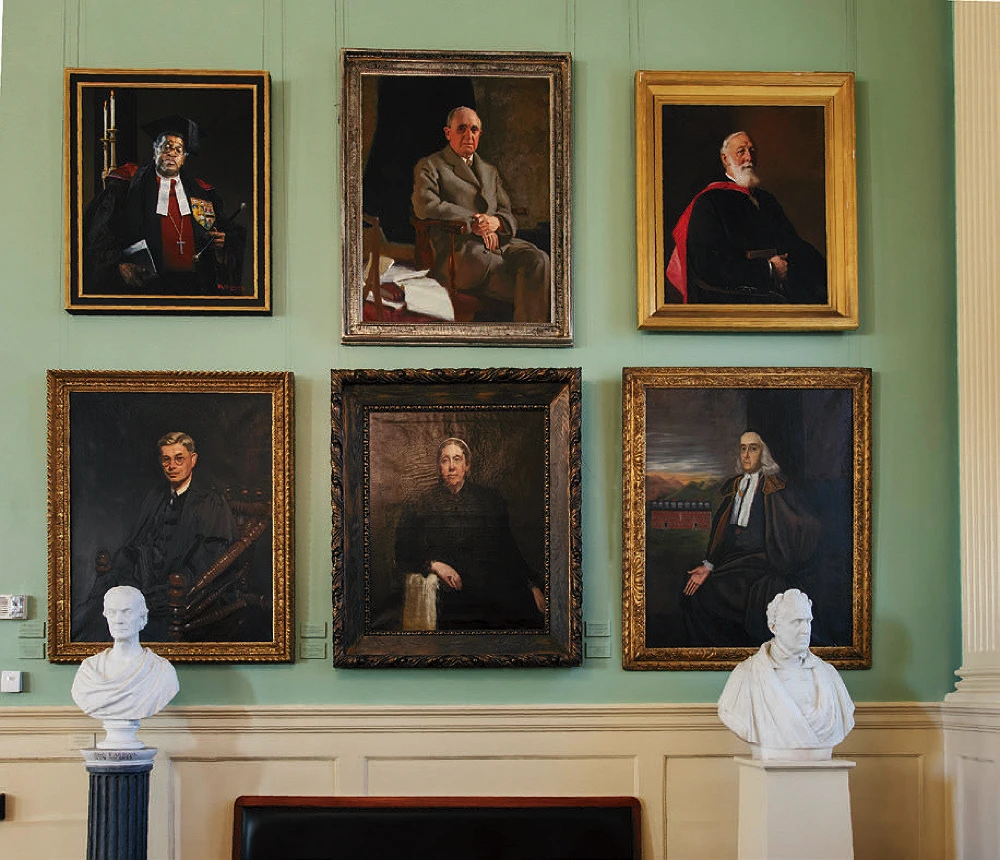
That has been largely true for the Faculty Room. The portraits on display do include historian Helen Maud Cam, FAS’s first tenured woman, introduced in 1995 (see “Harvard’s Womanless History,” November-December 1999, page 51); astronomer Cecilia Payne-Gaposchkin, given in 2002 by Baird professor of science Dudley R. Herschbach and his wife, Georgene B. Herschbach, associate dean of Harvard College (see “Portrait of a Pioneer,” March-April 2002, page 67; Dudley Herschbach agitated for “affirmative action for portraits” for more than 30 years, and this one was commissioned through a gift trust established with funds from his 1986 Nobel Prize in chemistry); and the likeness of the Reverend Peter J. Gomes (who communed with the heavens in a different way), which effected racial integration when it was installed in 2016 (see harvardmag.com/gomes-portrait-16). Elizabeth Cary Agassiz, first president of Radcliffe College, joined the ranks as well, in 2005. But they are exceptions to the prevailing roster of old Boston names: Lawrence, Longfellow, Lowells plural.

The responsibility for effecting change in this most traditional of venues lies with Brenda Tindal, named inaugural chief campus curator in early 2023 (see harvardmag.com/tindal-curator-23). During a briefing at the December FAS meeting, she told the assembled faculty that the “renewal project” will proceed, at first, by subtraction. Many of the works on display require conservation; rotating them off display requires securing adequate storage space, at a premium throughout the University’s libraries and museums; and the room’s environmental controls do not satisfy heating, cooling, and humidity standards.


That said, the project has begun: works were removed for conservation during winter recess. Tindal plans extensive consultations with FAS members this spring, pointing toward alternate three-year plans for rotating the works on display, with substitutes appearing over the coming year for the objects now undergoing conservation. Simultaneously, technical work for a longer-term enhancement of the space and environment will proceed, yielding a better idea about how the Faculty Room exhibition may change more comprehensively—perhaps even with the benefit of modern museum technologies like display kiosks offering more information on each object’s creation, provenance, context, and relationship to other representations of FAS and Harvard history and conventions.
In other words, change will come to this most traditional of Harvard places—but, appropriately, on traditional, deliberate Harvard time.
